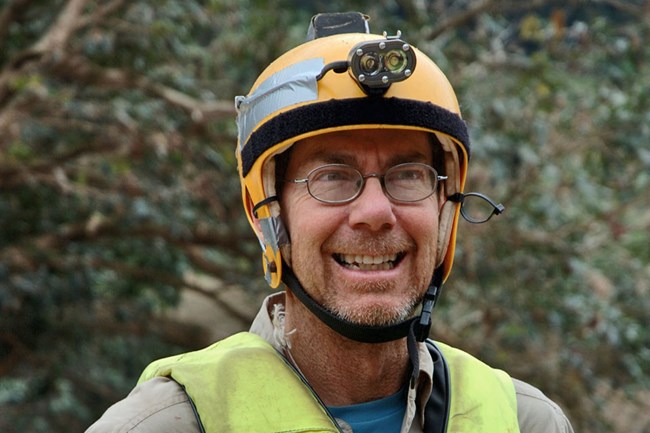
Chapter 16
David Bunnell, cave explorer and author of books on sea caves of the Channel Islands, talks about the size and characteristics of sea caves found in the Channel Islands and the conditions that created the sea caves.
Sea caves are found on all eight of the Channel Islands. They are largest and most abundant on Santa Cruz, Anacapa, and Santa Rosa Islands.
I’ve explored and mapped over 100 on both Santa Cruz and Anacapa and over 50 on Santa Rosa. If you added all the caves on Santa Cruz together they would total over five miles of passage! Painted Cave, at 1,215 feet, is the longest single cave on any of the islands and one of the world’s largest.Most of the caves are formed in volcanic basalt that extruded from undersea volcanic vents. Over millions of years the rock has been uplifted above sea level. Dramatic sheer cliffs of basalt up to 300 feet high resulted from this uprising, as well as producing a swarm of localized faults.
These fractures have weakened the rock and allow the swells and waves that crash against the cliffs to penetrate deep inside. Compression of all this force in a small space has fractured the rock further and over time has enlarged narrow fissures into humanly traversable passages. The biggest sea cave chambers, reaching as much as a hundred feet across, occur where multiple faults intersect and where the faults face most directly into prevailing winds.
Conditions inside sea caves change with the tide and the weather. Cave passages may be completely underwater at high tide and then open up as the tide moves out. In some cases you can walk in at low tide. In other caves you can float in at high tide, but at low tide lots of slippery rocks make it more difficult to explore.
In the Channel Islands many caves have some water at all tide levels, so kayaking is a popular way to explore them.
-
Listen to chapter 16 entry
Learn about sea caves on the Channel Islands.
Last updated: November 16, 2017
